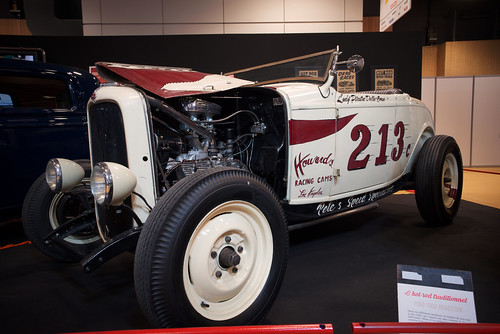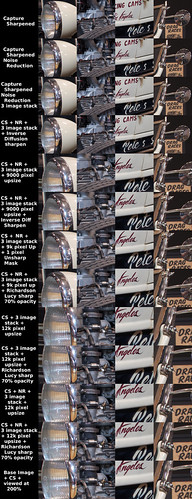I've gone from the Already Known, to the Mildly Interesting, and onto the Absurdly Ridiculous. With this entry I run headlong into the Certifiably Insane.
I'll make one last pass at image up-sizing. This time I'm going to try and quadruple the area of an image by going from 24mpixel to 108MegaOutragiousHolyMolyBatmanDearGawdAlrightyPixels. In the process, my poor 'ol Linux image processing 'puter will be super stressed and might just eel over, paws up.
The process of upsizing will be done in steps and by hand so that each stage is known and understood. That way if I want to modify or substitute something different at any of the steps I'll have all the Points of Reference needed to properly evaluate an outcome.
This is in contrast to software providers who's products pretty much hide what's going on behind the marketing hype of "AI." I can't for the life of me understand how these kind of software are "AI" driven, if they mean by AI Artificial Intelligence. Where is the Promised Land of Machine Learning when the current state of what's called "AI" gives wrong answers? Seems like a willfully stupid machine if you ask me and "AI" could actually stand for "Absurdly Ignorant" for all I know.
OK. I'll step off the soapbox... um... yes... photography... make big beautiful picture bigger. That's it. I'm back, now. Ack! what a detour.
A photograph of simply the most
beautiful Fezzaz racecars ever constructed.
Captured using a Sony A7 and Sony 35mm f/2.8 ZA.
On a tripod, of course. How else do you get
something like this ridiculously sharp in low
light at ISO100 and the lens set at f/8?
Multi-image-file averaging (3 file image stacking), even at low ISO, produces for what I've seen so far coming out of my nearly 10 year old Sony A7 Full Frame cameras Super Clean Noiseless files. Applying a bit more sharpening on a 1.5x linear upsize returns cleaner files at 9000 pixels long than I ever ever got out of my old Canon 5D MkII DSLR at base 5616 pixel image size.
From what I've experienced, sensor technologies have come a long ways and I feel Sony is currently in the lead. Since Nikon used/uses Sony sensor foundries for their light capture devices, I'll include Nikon in a sub-heading to Sony's sagesse in this area of design and manufacturing. In fairness, though, I read somewhere recently that Canon may have caught up with Sony with Canon's latest iterations of the R-series Full Frame cameras. So don't take my word for anything and test for yourself.
Setup ~
Again, using Human Intelligence (HI!!!) to capture three images to stack as a noise reduction and file upsize exercise -
- Sony A7
- ISO100
- 2second timer
- Back-button focus (to maintain image alignment - focus once, shoot three)
- Sigma 24mm f/3.5 DG DN
- Set to f/8
- Manfrotto tripod
- Rawtherapee
- Curves setting
- Capture Sharpen
- Noise Reduction
- Kodak film emulation
- Gimp
- 3 image stacking in layers
- Opacity setting of layers
- Scale Image NoHalo image upsize operator - sample size 1200DPI (this is important)
- Additional sharpening application (various G'Mic integrated operators)
To reiterate, the file upsize filter set to either 600DPI or in my case 1200DPI is important because it sets the number of "slices" of information per inch that the upsize will take during the operation. Regarding the upsize algorithm, I've previously written about the NoHalo. I won't cover that again here, except to note it's much better than anything else I've to this point tried.
Comparison
[As always, click on the following image and inspect it at 100percent to see whatever there might be to see]
For this exercise I will consider the final set of rows in the following image. They are the ones upsized to 12000 pixels on the long dimension.
Comments ~



No comments:
Post a Comment